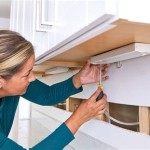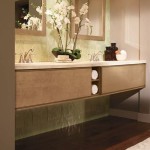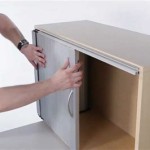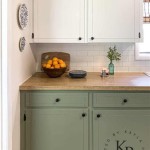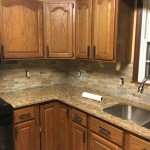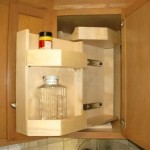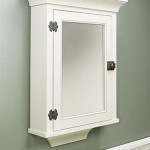How To Paint Your Cabinets
Revitalizing your kitchen or bathroom can be as simple as a fresh coat of paint on your cabinets. Painting cabinets can transform the look of a room, making it feel modern, updated, or even entirely new. This process can be a cost-effective alternative to replacing outdated cabinets, allowing you to achieve a high-end look without breaking the bank. While painting cabinets may seem daunting, with proper preparation and the right techniques, it can be a manageable DIY project.
1. Preparation: The Key to a Successful Paint Job
A successful cabinet paint job relies heavily on proper preparation. This involves thoroughly cleaning, sanding, and priming the surfaces, ensuring a smooth and even finish.
Begin by removing all cabinet doors and drawers. If you have hardware, like knobs or pulls, remove those as well. This allows for easier access to all surfaces.
Once all components are removed, thoroughly clean the cabinets with a degreasing solution to remove any dirt, grease, or grime. This step is crucial for optimal paint adhesion.
Next, sand the cabinets using a fine-grit sandpaper (120-grit). Sanding removes any imperfections, creates a rough surface for the primer to adhere to, and ensures a smooth paint finish.
After sanding, wipe down the surfaces with a damp cloth to remove dust particles. This prevents the dust from interfering with the primer and paint application.
Lastly, apply a high-quality primer specifically designed for cabinets. Priming is essential as it helps the paint adhere better, prevents the wood from absorbing the paint, and provides a smooth, even base for the finish coat.
2. Painting Techniques: Achieving a Professional Finish
The key to a professional-looking paint job is using the right painting techniques.
When applying paint, use a high-quality paintbrush designed for cabinets. Apply thin, even coats, allowing each coat to dry completely before applying the next. Avoid overloading the brush as this can lead to drips and uneven coverage.
For cabinets with intricate details, use a smaller brush or a foam roller for tight spaces. This ensures that all areas receive a coat of paint.
To achieve a smooth and even finish, use a light touch and long, even strokes. Avoid leaving brush strokes, which can create an uneven appearance.
For larger surfaces like cabinet doors, use a roller with a nap that is appropriate for the type of paint you are using. Roll the paint in smooth, even motions, ensuring complete coverage.
Let the paint dry completely according to the manufacturer's instructions before applying the second coat. This ensures that the paint adheres properly and provides a durable finish.
Once the paint is completely dry, reinstall the cabinet doors and drawers. Then, carefully replace the hardware. Be sure to allow the paint to cure completely before using the cabinets.
3. Choosing the Right Materials: Enhancing Durability and Aesthetics
Selecting the right materials for your cabinet painting project can significantly impact the final look and durability of the finish.
When choosing paint, opt for a high-quality enamel paint specifically designed for cabinets. This type of paint is known for its durability, resistance to chips and scratches, and ease of cleaning.
Consider the type of finish you want. Glossy finishes are more resistant to moisture and stains but tend to show imperfections more readily. Matte finishes offer a more forgiving appearance and are less likely to show fingerprints or dust.
Prioritize using a primer compatible with the type of paint chosen. This ensures optimal adhesion and prevents the wood from absorbing the paint, resulting in a more durable finish.
For a truly professional look, consider using a specialized paint sprayer. This method provides a smooth, even finish, especially for large surfaces like cabinet doors. If you are opting for a sprayer, ensure you have proper ventilation and cover surrounding areas to prevent paint overspray.
When choosing paint colors, consider the overall design of your kitchen or bathroom, as well as the lighting and color of other fixtures in the room. Selecting a complementary color can breathe new life into your space, while a bolder hue can create a dramatic and modern feel.
Remember to properly dispose of paint and other materials according to local regulations.

How To Paint Cabinets

How To Paint Inside Kitchen Cabinets Let S Furniture

The Best Way To Paint Kitchen Cabinets No Sanding Palette Muse

Diy Painting Your Kitchen Cabinets The Right Way

How To Paint Your Kitchen Cabinets Without Losing Mind The Kim Six Fix

How To Paint Laminate Cabinets Without Sanding The Palette Muse

How To Paint Your Kitchen Cabinets The Easy Way

Avoid These Mistakes How To Paint Cabinets That Are Already Painted Grace In My Space

How To Paint Your Cabinets In 7 Days The Inspired Hive

Livelovediy How To Paint Kitchen Cabinets In 10 Easy Steps
Related Posts

